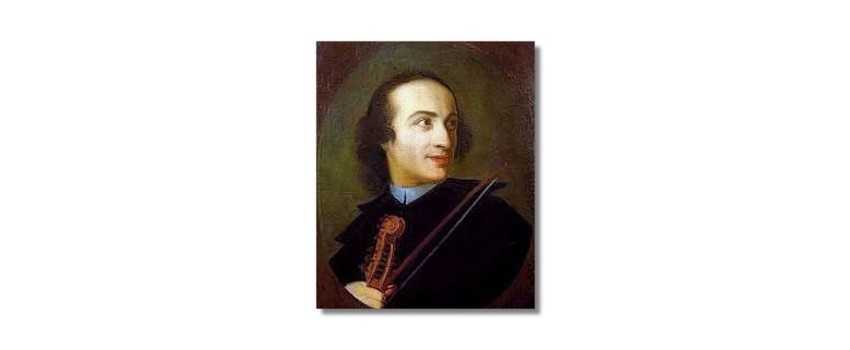Alte Meister Fur Junge Spieler For Cello And Piano By Such
Alte Meister fur junge spieler for cello and piano edited by Percy Such
Giuseppe Tartini, born on April 8, 1692, was an influential Italian composer and violinist of the Baroque era. His contributions to acoustic theory, virtuoso concerto, and solo violin performance were highly regarded during his time. Tartini's musical journey was marked by his dedication to teaching and composing, which earned him international recognition.
Early Life and Education
Giuseppe Tartini was born in Piran, a town in present-day Slovenia. He displayed an early talent for music and began learning the violin at a young age. Tartini's father, Giovanni Antonio, recognized his son's potential and arranged for him to study under the renowned violinist and composer, Giuseppe Torelli, in Padua.
Under Torelli's guidance, Tartini honed his violin skills and delved deeper into the world of composition. He studied counterpoint and harmony, mastering the techniques that would later define his own music. Tartini's dedication and passion for music became evident during his formative years, setting the stage for his future success.
Musical Career and Contributions
One of Tartini's most famous compositions is the "Devil's Trill" violin sonata. According to legend, Tartini dreamt that he made a pact with the devil, who played an incredibly beautiful and intricate piece on the violin. When Tartini woke up, he tried to recreate the melody he heard in his dream, resulting in the creation of the mesmerizing "Devil's Trill" sonata.
The "Devil's Trill" sonata showcases Tartini's technical brilliance and virtuosity on the violin. It is a challenging piece that requires exceptional skill and control to perform. The sonata's hauntingly beautiful melodies and intricate passages have captivated audiences for centuries, solidifying Tartini's reputation as a master composer.
Violin Concertos and Solo Works
Tartini composed numerous violin concertos and solo works that demonstrated his deep understanding of the instrument. His compositions showcased a combination of technical prowess and emotional depth, captivating listeners with their intricate melodies and expressive harmonies.
One of Tartini's notable contributions to the violin repertoire is his innovative use of double stops and trills. These techniques added richness and complexity to his compositions, pushing the boundaries of what was considered possible on the violin during his time.
L'arte del arco and Corelli's Influence
In Tartini's treatise, "L'arte del arco" ("The Art of the Bow"), he delved into the technical aspects of violin playing. The treatise included 38 variations on a motif from Corelli, showcasing Tartini's analytical approach to music and his mastery of the instrument.
Tartini's admiration for Corelli, an influential Italian composer of the time, is evident in his compositions. He incorporated Corelli's stylistic elements into his own works, expanding the repertoire of the trio sonata and inspiring other instrumental composers of the era.
Teaching and Influence
Tartini's talents extended beyond his own compositions. He was highly respected as a teacher, attracting students from all over Europe to study with him in Padua. Tartini's pedagogical approach emphasized technical precision, musical expression, and the importance of understanding the theoretical foundations of music.
His teaching methods and influential treatises, such as "L'arte del arco," left a lasting impact on generations of violinists and composers. Tartini's legacy as a teacher and mentor continues to shape the world of classical music today.
Legacy and Recognition
Despite his achievements and contributions to music, Tartini's fame declined after his death in 1770. It wasn't until the 20th century that his works began to receive the recognition they deserved. Today, Tartini is celebrated as one of the greatest violinists and composers of the Baroque era.
Numerous recordings and performances of Tartini's compositions have brought his music back into the spotlight. His innovative techniques, expressive melodies, and technical brilliance continue to inspire and captivate musicians and audiences alike.
Conclusion
Giuseppe Tartini's life and music are a testament to his unwavering dedication and talent as a composer and violinist. His compositions, including the iconic "Devil's Trill" sonata, showcase his technical brilliance and emotional depth. Tartini's contributions to violin performance and his influence as a teacher have left an indelible mark on the world of classical music. Today, his legacy continues to inspire and resonate with musicians and music enthusiasts worldwide.

Alte Meister fur junge spieler for cello and piano edited by Percy Such
Alte Meisterweisen fur junge Cellisten (Schott)
Composer Giuseppe Tartini's piece, edited by Walter Heinz Bernstein, is a Baroque period work for solo instruments. The softcover edition, published by Breitkopf, makes it accessible to the viola da gamba, one of the more frequently played instruments. The piece comes with a piano reduction, spans 56 pages, and lasts for 15 minutes. The work is published under the code BR.EB-7430.